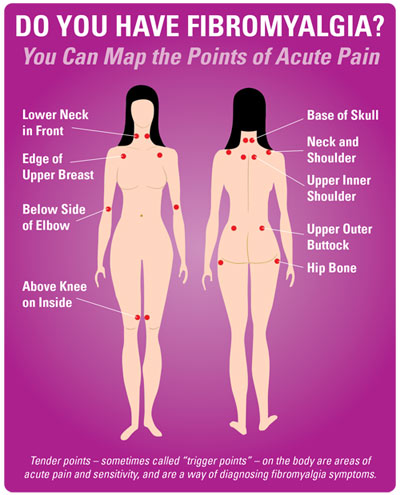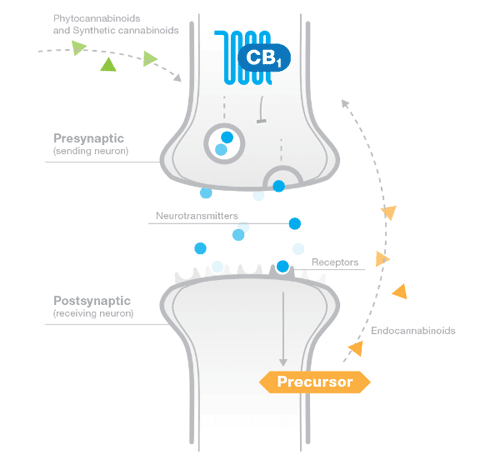The benefits of cannabis for treating Fibromyalgia
List of contents
What is Fibromyalgia?
Fibromyalgia can be a completely devastating disease, often affecting women, with symptoms that include chronic pain, insomnia, fatigue, migraines, painful joints as well as irritable bowel issues.
Symptoms have been known to start folllowing physical trauma, hospital surgeries or major psychological stress. It is also possible for symptoms to slowly accumulate over time with no obvious trigger. Let's see how cannabis can help these patients.

With no known cure and potentially excruciating and debilitating symptoms, it is little surprise that patients have increasingly been turning to cannabis. Fibromyalgia is one of several conditions that qualify US patients for a medical marijuana card.
Fibromyalgia has been misunderstood for many years, yet affects an estimated 6% of the world's population. It is only recently that this painful condition has been linked to a deficiency in the endocannabinoid system. (Receptors for cannabinoids in the human body were identified in the 1990s by Allyn Howlett and William Devane.)
In Spain an even higher percentage of the population are afflicted by this disease - some figures suggesting that as much as 13% of the population may be affected
How does cannabis combat Fibromyalgia?
Recently in 2016 in the US the National Academies of Sciences, Engineering, and Medicine published one of the most comprehensive long term studies ever completed on the efficacy of cannabis for various conditions, including research begun in 1999.
The symptoms alleviated by medical cannabis consumption include:
- Insomnia: The findings from the 2016 study were that cannabinoids do indeed make sleeping easier for patients that are suffering from sleep issues caused by fibromyalgia, as well as other diseases.
- Nerve Pain: In addition to helping with sleep, cannabis is also well proven to act on neuropathic pain.
- Repair of Nerve damage. Evidence is emerging that the endocannaboind system is intrinsically linked to the repair of nerve cells.
- Joint Pain. A more recent study demonstrates that cannabis should be considered seriously for joint pain.

The diagram below illustrates how cannabinoids act together with the endocannabinoid system to reduce joint pain.
Dr. Ethan Russo (one of the world’s leading cannabinoid experts) was recently quoted as saying;
"Migraine, fibromyalgia (widespread bodily pain), IBS and related conditions display common clinical, biochemical and pathophysiological patterns that suggest an underlying clinical endocannabinoid deficiency (CECD) that may be suitably treated with cannabinoid medicines."
Cannabinoids have the advantage of being available in a variety of forms. Direct application of cannabis topicals is currently proving very popular in the US and is another way to help manage the pain caused by fibromyalgia. Even more recently, convenient transdermal patches have been developed.
How should one consume cannabinoids for Fibromyalgia?
Recent studies have shown that one of the safest ways to consume cannabis to treat neuropathic pain is by vaporizing it.
This method, (as opposed to smoking it) means a higher proportion of cannabinoids are absorbed by the body. In this study the average reduction in pain recorded was 30%. This correlates to the effect of conventional analgesia upon non treatment-resistant patients.
Another way to get the cannabinoids into your body is by eating a cannabis edible. (This is something that should be done carefully as a high dose may be accidently consumed and could create an uncomfortable reaction for several hours.)
‘Microdosing’ cannabis, (i.e. eating a small amount of a cannabis edible) has also been shown to be an effective way of treating the symptoms of fibromyalgia. This way, a patient is able to consume cannabis throughout the day and control the dose carefully.
At this time, studies have been as yet unable to provide any specific dosage advice. Common sense dictates that starting with a small amount and slowly increasing it over time relative to observed results is a safe way to calculate a dose, especially in the field of cannabis edibles, where once a large amount has been consumed, the effect cannot be reversed.
Studies have been conducted, however, comparing cannabis with conventional neuropathic analgesia.

Despite all evidence to the contrary, it should be noted that some studies have found no proof for cannabis acting on fibromyalgia, however in nearly all cases these studies have been carried out using Nabilone (synthetic THC) which is completely incomparable with the whole plant cannabis.
Using a full plant extract with high CBD will always be more effective than using a pharmaceutical version of cannabis like Nabilone. As no other cannabinoids are present, there can be no 'entourage effect' and the THC will not be as effective as it would be in its natural form.
In addition, strains with different THC and CBD content such as Fruity Jack, Sweet Love and Spicy CBD, mean that patients can experience the benefits of cannabis medicine without the psychoactive effects normally associated with the plant.
Scientific Studies about Cannabis and Fibromyalgia
1. https://www.ncbi.nlm.nih.gov/pubmed/29461346 (2018)
Thirty patients were identified, and 26 patients were included in the study. After commencing MC treatment, all the patients reported a significant improvement in every parameter on the questionnaire, and 13 patients (50%) stopped taking any other medications for fibromyalgia. Eight patients (30%) experienced very mild adverse effects.
2. https://www.ncbi.nlm.nih.gov/pmc/articles/PMC3080871/ (2011)
The use of cannabis was associated with beneficial effects on some FM symptoms. Further studies on the usefulness of cannabinoids in FM patients as well as cannabinoid system involvement in the pathophysiology of this condition are warranted.
3. https://pdfs.semanticscholar.org/4d12/db2a249cc22cb8e78f31586ff0036b8bce9d.pdf (2013)
Various forms of medicinal cannabis have provided mostly positive responses for patients with different types of pain: neuropathic, chronic, postoperative, and that related to fibromyalgia, rheumatoid arthritis, multiple sclerosis, and cancer.
4. https://www.liebertpub.com/doi/10.1089/can.2016.0009 (2016)
Cannabis or cannabinoids have been frequently utilized by fibromyalgia patients to treat its myriad symptoms. In an uncontrolled trial in nine patients, THC was administered in doses of 2.5–15 mg a day for 3 months. Surprisingly, the ethics committee would not permit placebo use in the study.
5. https://www.ncbi.nlm.nih.gov/pmc/articles/PMC5576607/ (2016)
Herbal cannabis was utilized in an open-label manner in 28 fibromyalgia patients in comparison with an equal number of matched control patients in another report. Two hours after cannabis use, VAS scores showed a statistically significant reduction of pain and stiffness, enhancement of relaxation, and an increase in somnolence and feeling of well-being.







